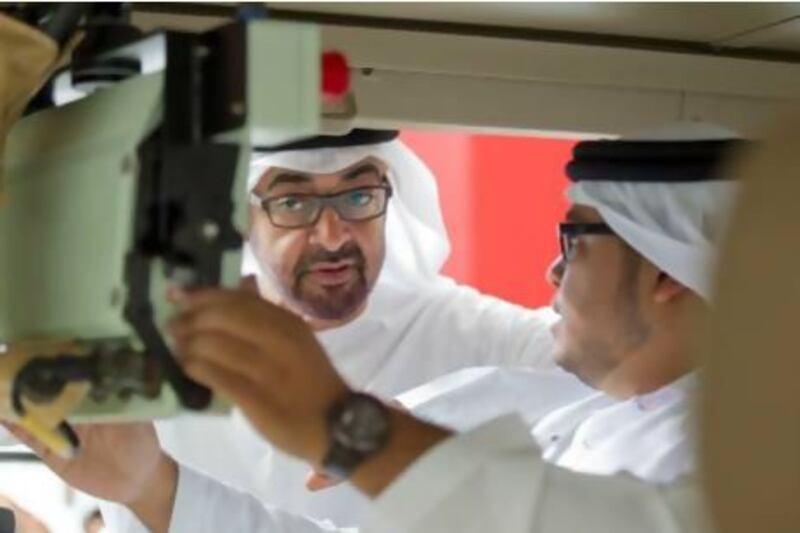ABU DHABI // The UAE has been advised by Nato to enter into sophisticated ballistic missile defence training in the Mediterranean to counter any potential threats.
An official from the North Atlantic Treaty Organisation's Missile Firing Installation (Namfi), who was attending Idex yesterday, said that increasing the capabilities of Arabian Gulf states, such as the UAE, was "highly suggested".
Brigadier General Ippokratis Daskalakis, commander of missile firing station on Crete, said: "The UAE would gain better training according to the latest Nato standards - and they will be able to face the sophisticated threats of our current environment.
"We cannot push countries to use our facility but we would recommend it. We can provide safe and effective training."
"Namfi is the ideal place to gain experience to deal with the threats facing countries today.
Nafmi offered its services to the UAE at Idex two years ago, stating a similar goal, and continue to campaign for the country's involvement.
Br Gen Daskalakis added: "We have the experience and the right mentality to work with countries from the Arabic Peninsula.
"Everything we offer can be tailored to our clients; we have the experience to prepare and to produce sophisticated scenarios to train the units to confront any kind of threat, from aircraft attacks to ballistic missiles."
He said that the Gulf, like many countries around the world, faced increased risk due to "the proliferation of weapons of mass destruction".
Belgium, Germany, Greece and the Netherlands all actively use the Greek island for their training but the facility is open to non-Nato members.
The UAE, although not a member of Nato, became actively involved in joint operations during the Arab Spring uprising in Libya, sending a number of fighter jets to the region.
Namfi has been one of Nato's most significant training centres since its opening in 1964 and it allows for live fire testing across a sea area 166km long and 90km wide.
Countries that use the facility, or indeed private companies, bring their own hardware and equipment to the range to test and train against unmanned drones.
Namfi offers testing of surface-to-air, air-to-air and a range of experimental systems.
The offer to the UAE remains on the table but, as yet, there is no indication of the country's intent to use the base.
Dr Theodore Karasik, director of research and consultancy at the Institute for Near East and Gulf Military Analysis, doubts that taking up the offer would have a significant impact on defences already in place in the UAE, which has historically acquired most of its systems from companies in the United States.
He said: "Nato is putting this offer on the table and, depending on politics and circumstances, maybe there will be an opportunity, but it doesn't seem likely today.
"I think what is in place now can meet the current threat but, of course, nothing is 100 per cent certain when it comes to ballistic missile defence."
Given the current push from within the GCC to create a missile defence shield for the region, Dr Karasik concluded: "Nato selling what they have is not the solution for the UAE at this time."
Speaking at the Middle East Missile and Air Defence Symposium in Abu Dhabi last year, the GCC secretary general, Dr Abdel Latif Al Zayani, said a missile defence system had to be implemented - but this would only be possible if the states work closely together.
"We want more cooperation and good relations between countries if we want to defend our land," he said.
The UAE spent more than Dh12billion in 2008 for US short-range Patriot missile systems. Further defensive capabilities of the country include Terminal High Altitude Area Defence missiles.
[ ksinclair@thenational.ae ]






